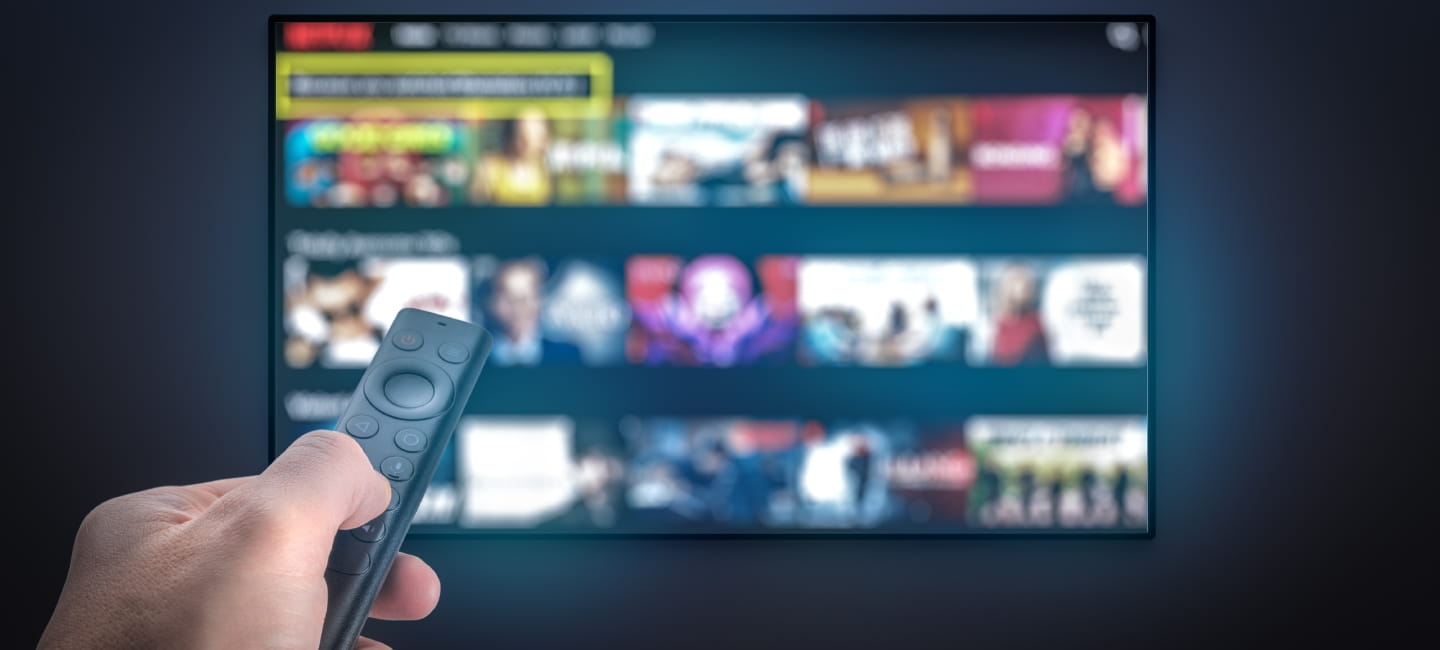
Just 15 or so years ago, streaming services were (relatively) cheap and exciting, bringing a new way to watch TV.
However, that lower cost is quickly eroding as streaming companies are now looking to claw back investment on the rush to grab customers in the early years.
Recent research from Ofcom shows that subscribers to streaming platforms have plateaued in the last year, with around two-thirds of households paying for some sort of video on demand.
Prices of music and TV streaming have increased considerably in the last few years, and while they might not seem huge individually, if you're subscribed to several different platforms, those rises can suddenly make a big dent in even the most careful household budget.
The good news is, with some careful management, you can still enjoy lots of on-demand content while saving hundreds of pounds per year.
Back in 2014, Netflix's ad-free Premium (then called Platinum) package was just £8.99 a month – it's now £17.99. Apple TV+ launched in 2019 for £4.99 a month but now costs £8.99.
Disney Plus launched at £5.99 a month, rose to £7.99 and is currently £10.99 for a Premium subscription.
Price hikes have also happened in music. Spotify is now £11.99 per month for ad-free listening, £2 more than when it launched (although this was back in 2009, so the price hikes have been small), and Apple Music is £10.99, an increase of £1 since being unveiled in 2015.
Or Goren is the editor of Cord Busters, a site dedicated to UK streaming news and advice. As he explains, the increases aren't just a result of rising inflation around the globe.
"When streaming services like Netflix, Prime Video and Disney Plus were brand new, they had a large pool of potential customers to acquire,” he says.
“So, they focused on low(ish) prices and enticing content to get as many people as possible on board. But that's changing, and streamers are looking for new ways to make money.”
When Netflix launched, TV and film studios were happy to license their content to the fledgling firm.
Breaking Bad, one of the most streamed UK Netflix shows of 2014, was bought in from the US cable network AMC; Netflix also had big names such as Disney's Marvel movies and Pixar animations.
Now things have changed – networks have invested billions in original content and their own platforms, so are taking their TV shows and films back to give people a reason to subscribe to their service.
Goren says to boost revenues each service is looking to make more from their existing subscriber base, meaning the golden days of streamers offering massive ad-free catalogues for low prices appear to be over.
To do that they're upping prices, adding advertising to previously ad-free services, or both. Their goal is to increase what's known in the industry as ARPU: average revenue per user, while making sure that those of you who are subscribed want to stay signed up.
.jpg?sc=max&mw=800&h=450&la=en&h=731&w=1300&hash=995F12A97C920E652AD279F942537BAE)
At first, most streaming services offered a single, ad-free subscription (although Spotify has always offered a free, ad-based version and iPlayer has been free to licence payers since launch). In recent years, however, things have become a bit more complex.
As mentioned above, some platforms have begun to offer TV and movies with advertising in exchange for a lower cost, in a bid to bring in new subscribers.
Netflix, for instance, now offers three packages instead of one: Standard with adverts at £4.99 a month, Standard without adverts at £10.99 and Premium at £17.99.
The most expensive tier comes with high-end features, such as the best-quality video and audio, as well as allowing up to four people to watch at once. The ad-supported version doesn’t come with access to the full catalogue, and limits quality to just Full HD.
Disney Plus is similar: instead of one plan, it now has Standard With Ads at £4.99, Standard (without ads) at £7.99 and Premium at £10.99.
Like Netflix, the highest tier offers 4K video and high-end audio, where the other two plans only come in Full HD and limit the amount of people who can stream at the same time to just two.
Prime Video is included in Amazon's £8.99 Prime service – or £5.99 per month on its own – but Amazon added advertising in early 2024 and took away the high-end Dolby Vision HDR and Dolby Atmos audio.
If you want them back – and the adverts gone – you'll need to pay an extra £2.99 per month, but if you’re happy with ‘normal’ 4K (known as HDR10) then the cost might not be worth it.
The good news: if you’ve decided you want to spend less each month streaming, there’s a lot you can do.
First, you don't always need to pay to stream TV. There are plenty of free streaming services: not just iPlayer, ITVX or other UK broadcasters' apps, but platforms like the newly launched Tubi.
It offers a variety of films and TV shows; although you won’t find much in the way of new content, there are some old favourites on there, and you might find months’ worth of shows you want to watch.
You'll also find lots of free streaming on platforms like Google TV, Roku or via devices such as Amazon's Fire TV stick, which provides easy access to services such as Amazon's FreeVee.
That free platform offers classic TV shows and the occasional exclusive, such as LA police drama Bosch: Legacy.
With paid streaming, you can cut your costs by moving, as mentioned, from the most expensive tiers to cheaper ad-supported ones. Moving from Netflix Premium to the ad-supported tier, for example, will save nearly £150 a year.
You might think you’re missing out by dropping down - but if you don’t have a 4K TV (or just aren’t bothered about watching content in top quality) you can save a lot of money each month by sitting through a few adverts.
The only thing you might struggle with is the amount of people able to stream at the same time – if you have more than a couple of family members streaming at the same time, you’ll need the most expensive option.
But if it’s just two of you (and you don’t want higher-quality video), spending on the full package may be a waste of money.
Subscribing for a year can also save a lot – Disney, for instance, lets you pay for Plus annually for the price of 10 months.
There’s also a veritable raft of deals out there if you look – a few free months of things like Disney Plus or Apple TV+ can be found through loyalty schemes from banks, mobile phone networks or even supermarket loyalty points.
Simply search for your favourite service and ‘deals’ and you’ll find options for saving a few pounds each month.
However, the easiest way to save money is the simplest: be more selective about what you subscribe to and turn the services you need on and off regularly.
That can feel like a hassle, as it’s so much easier to have access instantly whenever a new show appears, but that convenience will likely cost you hundreds of pounds per year.
"Most people don't need all the streaming services all the time," Goren says. "You won't have enough time to watch everything at once anyway.
“So, every couple of months, ask yourself: what do I want to watch this month, and where is it streamed? Then sign up for that streaming service and only that one, and make sure you cancel the rest.
“Most streaming contracts are only for 30 days... and when you go on holiday in the summer, just cancel all of them and start the cycle again when you're back."
This makes you the streaming platforms’ worst nightmare because acquiring new customers is expensive and they'd really prefer you not to cancel.
As Goren points out, while streaming prices keep going up, things are still better than in the days when cable and satellite ruled the roost.
"In the past, we had to sign up for long-term, one-size-fits-all contracts with pay-TV companies like Sky and Virgin Media. Now, we can pick and choose what we want to watch and when we want to watch it, which is a good way to save."

There’s billions sitting unclaimed in shares and dividends – find out if any belongs to you.

From their first savings account to their first home, find out how your gifts can make the biggest impact for your grandchildren
.jpg?la=en&h=354&w=616&hash=653168623B92F3457D40ACA115D37B3E)

.jpg?la=en&h=354&w=616&hash=458B0288E9852F4B63A433E2FDD375E7)



We're here to help you make the most with your money. With a rage of financial services designed with over 50s in mind.